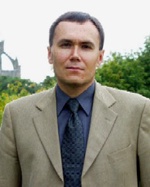Engineers at the University of Aberdeen have been awarded funding of more than £700,000 from the UK Government towards ground-breaking research in micro- and nanomechanics. Work at the Institution is at the forefront of our growing understanding of the behaviour of the so-called nanomaterials and ‘smart’ materials. Due to their super-strength and other remarkable properties, like ‘smart’ adaptability to the changing conditions, they have the potential to revolutionise manufacturing and construction industries in the 21st century.
Enormous advances made recently in nanotechnology mean that scientists and engineers are now on the brink of being able to fully exploit this new technology. The benefits could include ever-faster and more compact computers, and completely new types of devices which could revolutionise health care and quality of life. Nanotechnology involves the manipulation and manufacture of objects on an atomic scale (one nanometre is roughly the length of three atoms in a row, or 1/10,000th of the diameter of a human hair). Nanomechanics studies properties and behaviour of this new breed of materials.
The latest award of funding of £400,000 from the Engineering and Physical Sciences Research Council (EPSRC) has been made to a team of scientists being led by Dr Igor Guz, who is Head of the Centre for Micro- and Nanomechanics (CEMINACS) based at the University, and Dr Maria Kashtalyan for work on dynamic processes in non-elastic 'smart' structures with active layers.
The long-term goal is to develop design guidelines for using these materials, such as designing metal dampers for the vibration of buildings under wind and seismic loads, devices for suppressing vibrations in pipelines, as well as many more applications.
In October last year, £300,000 was awarded to Dr Guz and his colleague Dr Kashtalyan to study 3D dynamic problems in cracked micro- and nano- composite materials. These projects started a whole new direction of fracture mechanics leading to reassessing our understanding of strength and fracture of materials under dynamic loading conditions.
CEMINACS was established jointly in 2004 by the College of Physical Sciences at the University of Aberdeen and Timoshenko Institute of Mechanics (TIM) in Kiev, Ukraine. The objective is to create a critical mass of highly qualified experts to pursue international multidisciplinary collaboration aimed at tackling the challenges posed by the cutting-edge science of nanotechnology. The CEMINACS mission is to become the world reference for quality research in micro- and nanomechanics, achieving technological breakthroughs for industry.
CEMINACS will also train a new generation of young engineers and researchers in this field. Team member Dr Oleksandr Menshykov was part of a small group of Britain's leading young scientists and engineers who were invited to present their work at the House of Commons in December as part of the industry-sponsored SET for BRITAIN initiative.
In the two years since CEMINACS was formed, its 10 members have published more than 80 papers in leading international scientific journals, developed links with universities and research institutions throughout Europe, and presented at major international conferences worldwide. The work of the Centre is relevant to a wide range of industrial sectors including aerospace, space, marine, automotive, electronic, defence, security and medicine, leading to improvements in design and reductions of fabrication and manufacturing costs. Current financial support comes from the Royal Society, EPSRC, the University of Aberdeen and the Timoshenko Institute of Mechanics. Further funding is actively being sought from European and US agencies and from industrial sponsorship.
Welcoming the growing profile of CEMINACS, Professor Albert Rodger, Vice-Principal and Head of the College of Physical Sciences at the University, said: "Nanotechnologies and nanomaterials are arguably the most actively and extensively developing research areas as we enter this new century. The extraordinarily high level of current international funding in nanotechnology underlines the importance of nanomechanics in forming the basis for a whole range of technologies for the next 20 years. The UK must continue to maintain a leading role in exploiting this new area, which can only be achieved by significant research and development investment. At the University of Aberdeen we are determined to be at the forefront of the UK's contribution.
"This award recognises both the work being led by Dr Guz and also the growing international collaboration that CEMINACS represents, and which we know is vital to the way forward in realising the benefits of this exciting 21st century science."

"Present studies of nanomaterials are still in their infancy, and show the external manifestations of mechanical phenomena, but the actual mechanisms still await investigation. Ultimately, any study of how materials behave is with a view to how they are used in structural applications.
"Looking back to a discussion on mechanical properties of new materials which took place more than 40 years ago in 1964, the renowned physicist Professor JD Bernal said: "Here we must reconsider our objectives. We are talking about new materials but ultimately we are interested, not so much in materials themselves, but in the structures in which they have to function." I believe that nanomechanics now faces the same challenges that micromechanics did 40 years ago, which Professor Bernal described so eloquently."


